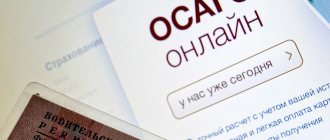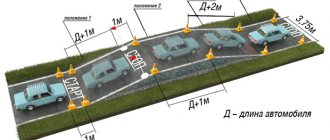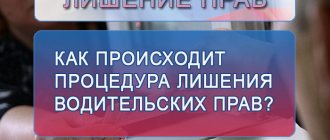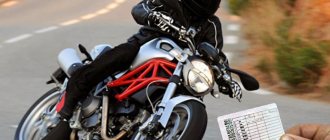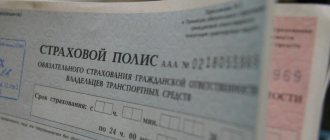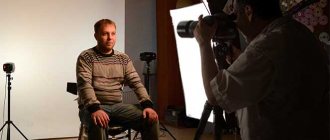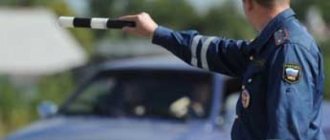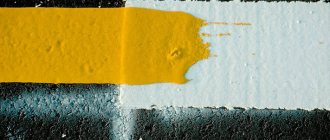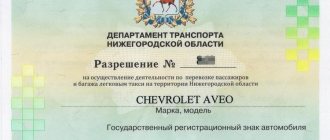September 30, 2020
School news
As practice shows, the main obstacle to obtaining a driver's license is the practical exam at the traffic police. They are allowed to test on the race track after successfully passing the theory. It is here that those wishing to obtain a driver’s license encounter problems, usually associated not with a lack of necessary skills, but with basic anxiety.
To help avoid difficulties when passing the exam at the race track, we will consider the order and features of this procedure in 2021.
The list of exercises is strictly regulated by regulatory documents. You should not worry that you will be asked to perform an exercise that was not covered at the driving school stage. It is worth noting that for each mistake made, penalty points are awarded. The number of exercises in the practical driving test depends on the type of area and transmission of the car. Let's consider what tasks a future driver may face.
Snake
The exercise area is a curved corridor with two smooth turns. The subject’s task is to drive along a given trajectory without crossing the side lines or hitting the cones. To successfully complete the task, you must choose the correct trajectory of movement, making turns along a large radius.
When driving a car with a manual transmission, it is recommended to fully release the clutch and be careful with the gas pedal. In this case, you can achieve the necessary smoothness of movement, which will simplify the task.
Penalty points are awarded for knocking down marking equipment, stopping the engine, reversing, and hitting a road marking line.
Overpass
Stopping and starting on a climb is considered one of the most difficult exercises. To successfully complete the task, the candidate must enter an uphill section, stop in front of the stop line, and continue driving in a straight direction. After passing the overpass, you must stop the car near the second stop line. The angle of inclination depends on the type of site. According to regulatory documents, this value varies between 8-16%.
While performing the exercise, it is prohibited to cross the stop line. To do this, you can better navigate by the cones installed on the sides of the line. When driving a vehicle with a manual transmission, it is recommended to resume driving after stopping before the stop line using the handbrake. This will reduce the amount of vehicle rollback. On a car with an automatic transmission, the exercise is easiest to perform in park mode - in this case, there is no need to use the handbrake.
Penalty points are awarded for knocking down marking equipment, stopping the engine, reversing, crossing the stop line, and rolling back more than 30 cm when the vehicle resumes moving.
Check-in to the garage
This exercise allows you to evaluate the potential driver's skills when driving and maneuvering in reverse. To complete the task, it is necessary to enter a garage located perpendicular to the trajectory of movement. The maneuver must be performed in an area whose width exceeds the length of the vehicle by one meter.
To successfully complete the exercise, after entering the site, you must stay as close to the garage control line as possible. The procedure is as follows:
- When the front wheel is level with the nearest corner cone, stop the car and turn the wheels as far as possible in the direction opposite to the garage.
- Continue driving until the near corner cone of the garage appears in the rearview mirror.
- Stop and turn the steering wheel all the way towards the second cone.
- Start reversing, using the side mirrors as your guide.
- Stop the car when it is parallel to the side walls of the garage.
- Turn the steering wheel so that the car can move in a straight line.
- Continue until you have fully entered the garage.
Penalty points are awarded for knocking down marking equipment, stopping the engine, and driving beyond the road marking lines.
Parallel parking
The site for the task simulates the side of the road, along which two cars are parked. The subject's task is to park the car between them. To successfully complete the exercise, the candidate driver must place the car in a parking space while driving in reverse. In this case, the left edge of the vehicle should not cross the control line of the site.
Penalty points are awarded for knocking down marking equipment, stopping the engine, as well as driving outside the boundaries of the task area.
U-turn
One of the easiest tasks on the exam. To successfully complete the exercise, the potential driver must position the vehicle in the opposite direction to the original one in a small area.
This task is completed in three steps:
- Moving as close to the right edge as possible, wait until the front wheel is level with the middle cone.
- Stop the car, turn the steering wheel all the way to the left and start driving.
- Stop the car near the solid marking line, turn the steering wheel all the way to the right and engage reverse gear.
- Once you have enough room to exit the site, stop the vehicle.
Penalty points are awarded for knocking down marking equipment, stopping the engine, as well as driving outside the boundaries of the task area.
Turns
During the task, the driver candidate will have to demonstrate maneuvering skills in confined spaces. The area for completing the task is a winding corridor that must be passed by making left and right turns at right angles.
To successfully complete the task it is necessary to make turns along a large radius. In this case, maneuvers should begin only after the side mirrors are in line with the angular cone.
Penalty points are awarded for knocking down marking equipment, stopping the engine, reversing, and hitting a road marking line.
Crossroads
This exercise is performed only on specially equipped automated racing tracks. To successfully complete the task, the driver candidate must drive through a controlled intersection in accordance with the traffic pattern. In this case, it is necessary to monitor the trajectory of movement and compliance with traffic rules.
Penalty points are awarded for crossing the stop line when stopping in front of a prohibitory traffic light, stalled engine, driving in reverse, as well as hitting the road marking lines marking the boundaries of the test exercise area.
Scheme of the circuit (training site)
At the training ground or race track in a driving school and when passing a practical exam at the State Traffic Safety Inspectorate, you will need to master and pass 6 exercises:
- 1. “Stopping and starting movement on an incline (overpass, hill)”;
- 2. “Turns by 90 degrees”;
- 3. “Turning in a confined space”;
- 4. “Snake”;
- 5. “Entering the garage (boxing) in reverse”;
- 6. “Parallel parking in reverse”;
Exercises on the circuit in 2021
In 2021, the number of exercises on the circuit is 7 (the list was increased on September 1, 2021):
- overpass,
- entry to boxing,
- parallel parking,
- snake,
- turns,
- reversal,
- crossroads
Note. The intersection exercise (controlled intersection) must be taken only on an automated racing track. If the circuit is normal, then there are 6 exercises left.
A traffic police officer can choose one of the following delivery schemes :
| Route 1 | Route 2 | Route 3 | |
| 1 | overpass | overpass | overpass |
| 2 | entrance to boxing | entrance to boxing | entrance to boxing |
| 3 | parallel parking | parallel parking | parallel parking |
| 4 | snake | snake | turns |
| 5 | turns | reversal | reversal |
| 6 | crossroads | crossroads | crossroads |
The examiner selects 6 exercises out of 7 on an automated circuit and 5 out of 6 on a regular circuit.
Exercise: Stopping and starting on a climb (overpass, hill)
Driver candidate:
- stops the vehicle in front of the “STOP-1” line, without crossing the front clearance of the vehicle with its projection, so that all wheels are on the lifting section;
- fixes the vehicle in a stationary state;
- continues to move in a forward direction, preventing the vehicle from rolling back more than 0.3 m;
- stops in front of the “STOP-2” line at a distance of no more than 1 m, engages neutral gear (when performing the exercise on a vehicle with a manual gearbox) and fixes the vehicle in a stationary state;
- leaves the exercise area, crossing the “STOP-2” line.
The magnitude of the rollback is recorded by the examiner by placing a control stand at least 1 m high at a distance of 0.3 m from the projection of the rear marker after the vehicle stops in front of the “STOP-1” line or by an automated system for monitoring and assessing the vehicle driving skills of driver candidates.
Category A opening procedure
Driver category c
As with any other category, the applicant must confirm his theoretical knowledge and practical skills by passing exams.
To acquire knowledge and skills, training is provided in a driving school with a department for training for category A or in a licensed motorcycle school.
Passing the theoretical part
Open category B provides the only advantage: if the theory exam was passed less than three months ago, then you do not need to take it. Due to time restrictions, this right can be used in most cases only by those who undergo training in two categories simultaneously.
The theoretical exam on traffic rules is carried out at the training center where the candidate is studying, or at the traffic police department.
Until 2013, it was possible to independently study traffic rules and pass an exam based on the results. Currently, external studies are not possible; the applicant must complete the full course of study. For applicants to drive a motorcycle, theoretical training must be 108 hours.
The theoretical basis for any category of driver's license is the same, so preparing and passing the exam will not be difficult for a practicing driver.
Passing the practical part
After successfully passing the theory and with positive characteristics from the instructor teaching the candidate how to drive, the applicant is allowed to take an exam to test practical driving skills.
During preparation and training sessions, the applicant gets acquainted with the circuit, learns to use motorcycles of different brands, and applies knowledge in practice.
The duration of the course is determined during the course, but should not be less than required by law: practical driving is studied for a minimum of 18 hours. During practical driving lessons we are talking about astronomical, not academic time, i.e. The duration of an hour of classes should be 60 minutes.
The letter A exam is carried out on a car or motorcycle site. There is a complex that is required to be checked at the final test. It includes 3 blocks:
- Overall corridor, overall semicircle, acceleration and deceleration.
- Snake, rutted board, low speed movement.
- Dimensional eight.
During the final tests, it is permissible to receive no more than 4 penalty points. If this indicator is exceeded, the exam is considered failed.
Penalty points may be awarded for common violations
| 1 point | 3 points | 5 points |
| Lack of low beam headlights | Engine self-silencing | Touching the road surface with your foot |
| Failure to give a hand signal before slowing down | Failure to give a turn signal in a timely manner | Offset from motion path |
| Sharp braking with wheel locking | No gear changes while driving | Touching guardrail cones with offset |
| Failure to engage neutral after stopping | Crossing the marking line | |
| Speed not low enough when checking low speed standard | Failure to give a turn signal by hand | |
| Stopping more than 40 cm from the stop line | ||
| Crossing or hitting a stop line |
Unlike other categories, motorcycle drivers do not take the test while driving on the road.
The video shows the practical part of the exam for category A
If you fail the exam, another time is assigned, usually after 7 days. According to clause 12 of the Decree of the Government of the Russian Federation “On admission to driving vehicles” No. 1097 dated October 24, 2014, an applicant who has successfully passed the theoretical test can take practical driving tests in this area over the next 6 months.
Upon successful completion of the practical test on the site, the driver’s training is considered complete, information is entered into the registration card, and the right to open category A appears.
Exercise: Moving and maneuvering in reverse, entering a box (garage) in reverse
Driver candidate:
- enters the exercise area;
- maneuvering in reverse, places the vehicle in the box so that the projection of the vehicle's front dimensions crosses the control line;
- engages neutral gear and locks the vehicle in a stationary state;
- leaves the box and crosses the end line of the exercise.
Depending on the traffic management scheme used on a racing track, automated racing track or closed area, the exercise can be performed either on the left or on the right side of the box.
How to pass a race track the first time
Most candidates succeed in passing the test on the first try. It's important to keep a few things in mind:
- set yourself up for success, but do without sedative pills (they can interfere with concentration, cause drowsiness, and slow down your reaction);
- wear comfortable clothes and shoes (women are better off without heels, replacing them with comfortable moccasins);
- remember that enough time is allotted for each maneuver so that you do them slowly;
- Use car mirrors during exercises.
Maximum delivery time
The period during which the applicant must pass the test is limited to
depending on the distance and number of maneuvers. Each task is given 2 minutes.
Time is also given to cover the distance between sections separated for different stages. Each of them is usually 250 m. That is, the total time to complete the circuit is 10-12 minutes.
If the applicant completes some task faster, he will be able to stay longer on another maneuver. The main thing is that the total period of stay on the site does not exceed the permissible value.
Travel speed
When performing the exercise on the site, the speed should be low, the optimal value is 10 km or slightly higher. This mode will allow you to complete all tasks on time and not make mistakes. After all, you will have to use only first or reverse gear, where the latter is necessary. And you don't need to waste time switching gears.
More on AutoLex.Net:
Interpretation of the sign in the traffic rules “Moving”, warning, limiting signs, requirements
Driver equipment
The clothes and shoes of the examinee are not the last factor influencing success, so when choosing, you need to consider the following:
- Wear comfortable shoes with flat and thin soles. With it, the pressure on the pedals is more accurately controlled, and the car can be driven smoothly.
- Clothes should be fairly loose. If there is no pressure anywhere, it is easier to cope with anxiety. But you should not wear a shirt or blouse with long, wide sleeves; they may interfere with your ability to grip the steering wheel during maneuvers.
- If the exam takes place during the cold season, you can take suitable shoes with you to change your shoes on the site. And when getting behind the wheel, it is better to take off your outer clothing and put it on the back seat so that it does not hinder your movements.
Exam in the city
The last test on the way to a driver's license will be driving on a city route. This part determines most of all whether the student will get a license or not.
There are some recommendations for driving a training car along the city route:
- the student must first adjust all the mirrors so that he feels comfortable driving;
- the seat is additionally adjusted so that the entire road and mirrors are in view;
- It is not recommended to be nervous during the exam, as this can cause mistakes;
- it is required to comply with the established speed limit (students are not allowed to travel along the route faster than 40 kilometers per hour);
- you need to concentrate as much as possible on the road, since inspectors often provoke mistakes;
- it is necessary to carefully monitor road signs, since failure to comply with them is a serious mistake;
- stopping is allowed only in places that are intended for this, and do not have permanent or temporary restrictions.
Taking into account all these recommendations, an applicant for a driver’s license will not have any significant difficulties during the test when passing the exam part in the city.
To avoid any difficulties during the traffic police exam, you should follow a number of recommendations that are regularly used by driving school instructors with extensive work experience.
Passing new rules, subtleties and pitfalls
The theoretical exam in the traffic police takes place only on a computer, which also evaluates the correctness of the answers.
For many, racing remains the most challenging task. And not an exam at a driving school, but a state exam, which is taken by traffic police inspectors. The success of all training depends on it. The fact is that recently, in most driving schools in the Russian Federation, the number of teaching hours, including practical classes, has been increased. Since then, the percentage of passing exams in driving schools has begun to decline. Many explain this by the fact that there are hack schools that charge less for tuition, naturally compressing the number of teaching hours and hours of practical training. And this affects the quality of knowledge and practical skills of cadets.
Since September 1, 2021, some rules for taking exams have changed, primarily this concerns the race track, new exercises have appeared there, and some old ones have changed. In general, the procedure for obtaining a driver’s license remains the same:
Theoretical exam
As before, it involves testing knowledge of the Rules of the Road and is a solution to ticket problems. The exam now takes place only on a computer, which also evaluates the correctness of the answers. Several proctors monitor the course of the exam, so you can forget about the possibility of receiving outside help. You need to rely only on your own knowledge. Nevertheless, there are also tricks to successfully passing the theory to the traffic police without errors.
Firstly, as in any exam, you need to drive away nervousness and panic and, of course, thoroughly know the answer to each of the tickets. Secondly, there is no need to rush anywhere. Before affirming this or that answer, you need to think very hard, and if you are not sure of the correctness of the answer, then you should move on to the next question in order to return to the controversial one in the end. This way you can save time and think about the question once again. Also, no conflicts with the examiners, even if they are wrong a hundred times over, our opinion in this case is unlikely to interest anyone. And also you can’t take any sedatives, it will only get worse, they worsen the reaction and slow down the functioning of the brain. Here you need to act as quickly and decisively as possible. Healthy anxiety is normal, and only solid knowledge, self-confidence and calm will help you easily pass traffic tickets at the traffic police the first time.
Traffic police circuit
After successfully passing the theory, cadets are allowed to take the practical exam. It takes place on a specially equipped site, an autodrome. Since 2021, new exercises have appeared, however, they did not radically affect the complexity of this stage. For each incorrect action, the student receives a penalty point, and all exercises on the race track must be completed within 10 minutes. The exam result is assessed based on the amount of penalty points. However, there are a number of errors and cases in which the exam is considered failed, this stage will be described in detail below.
Driving around the city
This is the final part of the traffic police exam, which is open to cadets who have successfully passed the exercises at the race track. The exam takes place on public roads, in normal urban conditions. The traffic police inspectors who take the exams are in the car with the cadet and draw up a route that needs to be driven without committing a single traffic violation. The difficulty of this stage is that it is impossible to predict the road situation and the route that the examiner will choose.
To successfully pass the theoretical exam in the traffic police, you need to learn the ticket questions, to pass the race track you can practice in similar conditions, but to pass the city the first time, you need all this together, plus full readiness for the combat conditions of city streets.
Only attention and thorough knowledge of traffic rules will help you pass this stage. But in case of failure, the procedure for retaking city driving will be possible in just a few weeks
In general terms, this is how the traffic police exams are conducted after successful completion of a driving school.
Difficulties when completing the overpass exercise on a race track
Many examinees make common mistakes when completing this task. As a rule, they occur as a result of not very good preparation.
Here are some errors that occur most frequently:
- Driving beyond the stop line or failing to stop in front of it;
- Rolling down a hill. If this happens, then, most likely, the driver did not press the gas pedal enough and did not have enough revolutions to drive up the hill;
- On the way up the mountain the engine stalled. In this case, the clutch was probably disengaged abruptly. It must be released very smoothly.
Here are some tips that will be useful when completing this exercise:
- If your engine stalls while performing a task, start it again and continue completing the task. During the entire exam, such a mistake can be made only twice.
- If you decide to stop the car with the brake pedal without using the handbrake, then you will not have enough time to quickly move your foot from the brake to the gas. As a rule, when moving your foot from one pedal to another, the car begins to roll back and knocks down one pole. Be sure to use the handbrake. This way you can complete the task correctly and without errors.
- If the car starts to roll away, you need to press the brake as quickly as possible. Afterwards, you need to secure the vehicle using the handbrake and continue the task.
- If you stand too far from the second stop line, shift into 1st gear again and move a few more centimeters.
It is worth saying that some shortcomings are not very noticeable, for example, stopping at a distance from the “Stop” marking or turning off the engine. So they may not be noticed. Other errors are more noticeable. But in order to cope with the exam perfectly, it is better not to make any mistakes at all.
We can say that there is no difficulty in performing the overpass exercise on a race track - we have already looked at how to complete it correctly. Now it’s worth considering the possible fines that may be assessed upon its implementation.
